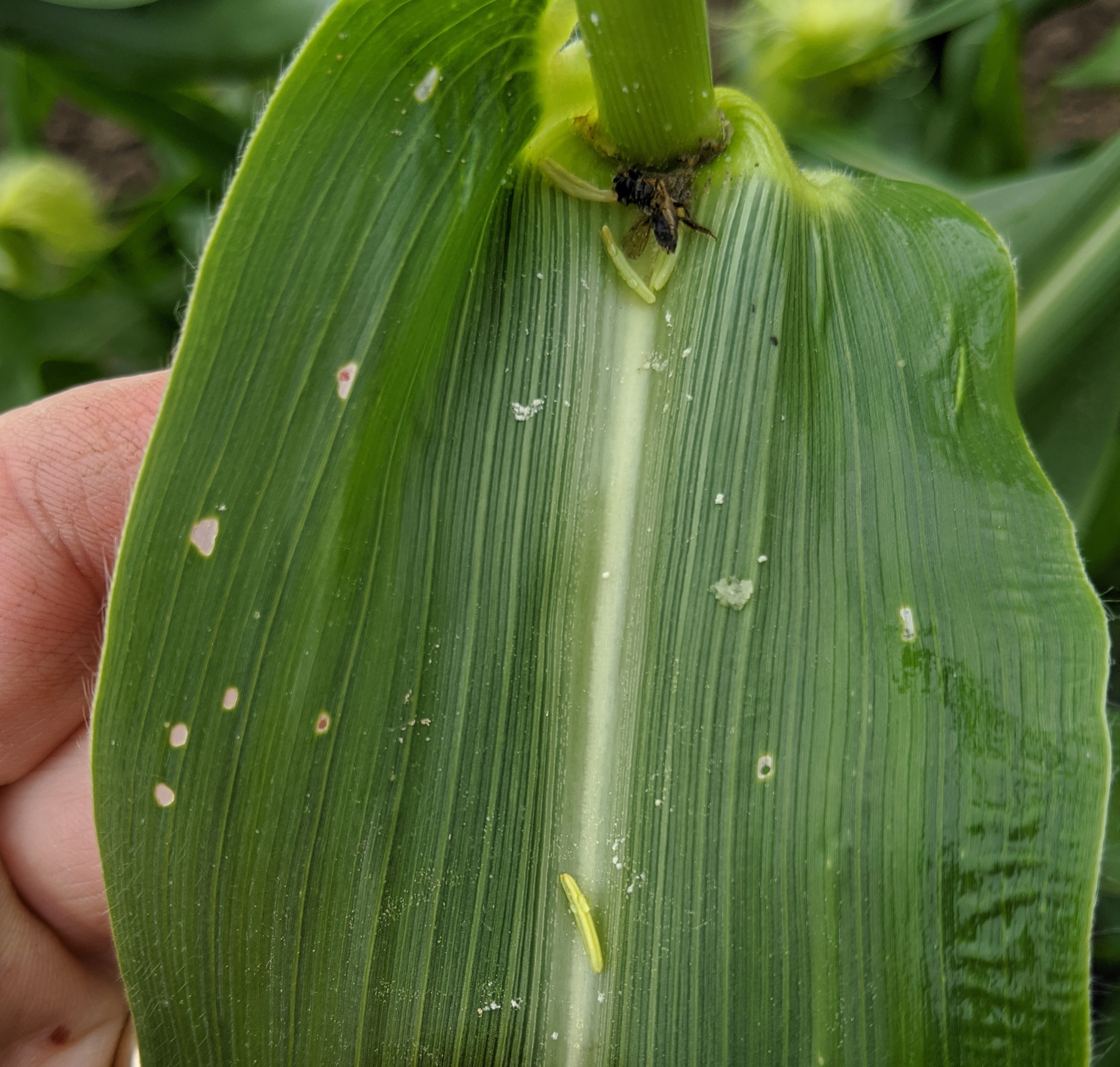West central Michigan vegetable update – June 24, 2020
Cucurbit downy mildew has been detected in southwest Michigan. It’s time to initiate a fungicide program in susceptible crops.

Weather
Most of the state will be sunny and dry today, June 24, and Thursday. Rainfall totals of up to 1 inch or more are predicted for west Michigan through next Wednesday, with most expected to fall Friday afternoon through early Saturday.
Today will see highs in the upper 60s to mid-70s, with temperatures steadily warming to the upper 70s to mid-80s by Saturday. The medium-term outlooks call for a strong chance of above-normal temperatures starting the middle of next week through early July.
Crop updates
Asparagus harvest is winding down in west central Michigan after a very strange year. Shutdown is a good time to chip away at perennial weeds like quackgrass, milkweed, field bindweed and Canada thistle. Glyphosate has activity against milkweed and quackgrass. Experience suggests including an acidifier with glyphosate is important for some perennial weeds. Quinstar is labeled for asparagus and has activity against field bindweed and thistle. If Canada thistle is an issue, Spur is another good option. Don’t forget to print your indemnified label if you are applying Dual Magnum at lay-by.
As new shoots grow, be on the lookout for tarnished plant bug this year. Scouts have noticed an unusually high abundance of this pest in other crops. It can damage new shoots as they grow, causing them to “crook” above the point where the insect feeds. Permethrin and acetamiprid both carry this pest on their label.
Celery scouts have noticed an unusually high abundance of tarnished plant bug this year. Celery leaftier has also been flying. Variegated cutworm egg masses may be laid and start hatching over the next few weeks, based on degree days at the Dowagiac, Fennville, Hudsonville and Fremont Enviroweather stations. Check your scouting reports for notes about trap captures and egg masses. Products with activity against both tarnished plant bug and caterpillars include Baythroid XL (zero-day preharvest interval) and Mustang Maxx (one-day preharvest interval). Mustang Maxx also carries leafhoppers on its label.
Cucurbit downy mildew was confirmed Monday, June 22, in a southwest Michigan cucumber field. There have been multiple days with positive hits in four out of five spore traps, including Muskegon County. Pickle, cucumber and melon growers should initiate fungicide programs. Pickle growers in west central and northward could use Bravo, Gavel or Zing! to start their program. Banded applications could save on product where possible. Other products could be used once this disease is detected further north. Check out Mary Hausbeck’s Downy Mildew News website to track spore counts and get spray recommendations for 2020.
Cucurbits were being mechanically weeded using tools including Eco weeders over the past few weeks. Earlier on, organic growers may also want to consider using flex tine weeders to get small weeds. Michigan State University’s Dan Brainard has used this in squash planted 1.5 inches deep that have one true leaf. This tool has done a good job killing small weeds without injuring mall cucurbits.
Onion thrips were present in all three locations I have checked over the past week but were not at threshold levels in the northern most field. For Movento, make two back to back applications in subsequent weeks, use a penetrating surfactant and do not mix with chlorlothalonil.
Some farms have initiated their fungicide programs on transplanted or direct-sown onions. Products to consider, in rank order of efficacy for Stemphylium, include:
- Luna Tranquility (FRAC 7/9) or Miravis Prime (FRAC 7/12)
- Tilt (FRAC 3) plus mancozeb (FRAC M3)
- Chlorothalonil (FRAC M5)
Each of these single products or combinations also include botrytis and purple blotch on their labels. Note, fluazinam is another product with a unique FRAC code that performed well in Hausbeck’s Stemphylium trials. It is available as brandname Omega, with the generics Lektivar 40SC and Orbus 4F also carrying onions on their labels. Fluazinam also carries downy mildew, botrytis and purple blotch on its label. The label allows for six applications per season and states that no adjuvant is to be used.

Sweet corn growers planting for early markets should check for damage from first generation European corn borer. One field I checked was silking this week. The easiest sign of damage to spot was tassels that had toppled over due to feeding injury. Small caterpillars were boring into the tassels in this corn and there was some evidence on a few plants they had tried to bore into ears (Photo 1). “Window-pane” feeding damage was also visible on some of these plants, which occurred when small caterpillars fed in the whorl (Photo 2).
A prompt application of an affordable, long residual pyrethroid at tasseling could be helpful to keep them from boring into the ears and to control newly hatching caterpillars. Applications could then be made thereafter every five days up to around 10 days before harvest.
The earliest corn is likely most at risk, as this first generation seeks out the largest corn to lay its eggs on, and field corn is small. The first flight is ongoing now but is expected to slow down over the next one to two weeks based on degree days at the Hudsonville, Standale, Kent City, and Hart Enviroweather stations.



 Print
Print Email
Email




